Using AI In Software Development: The Future Is Here!
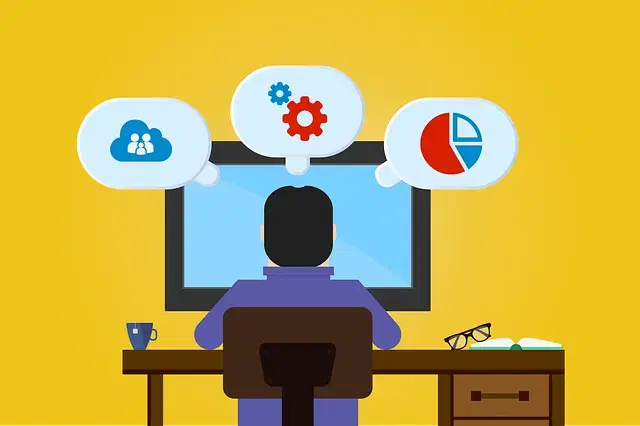

AI in software development is no longer a futuristic concept. It has become an essential part of modern software development, providing various benefits to developers and businesses. AI and machine learning can automate many tasks in software development workflows. It can handle everything from requirements gathering to testing and deployment.
In this article, we will explore the impact of AI and machine learning on software development and discuss their applications, benefits, and examples of successful implementations. You will learn how AI can improve software quality, speed up development and delivery, reduce costs and errors, and enhance decision-making and problem-solving abilities.
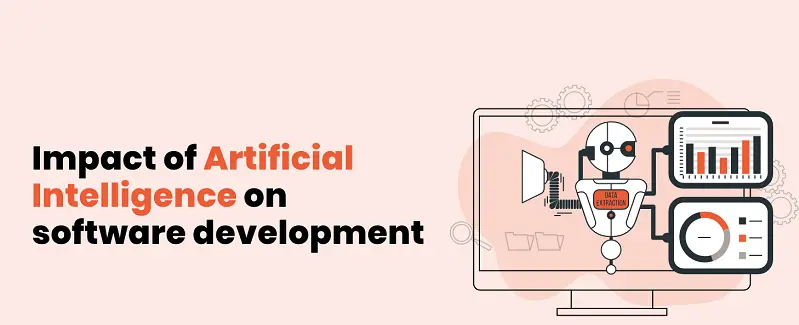
Key Points
- AI-powered code is more efficient and can create complex applications with less effort and time.
- AI can analyze data for better decision-making and predictions.
- AI automates repetitive tasks, freeing up developers for more creative work.
- NLP allows developers to communicate with machines more easily.
- Machine learning predicts and prioritizes bug-fixing efforts.
- AI generates code based on natural language descriptions for faster development.
- Automated testing and deployment improve software reliability and stability.
- Decision support systems help developers make better software design decisions.
Importance of AI in modern software development
AI is incredibly important in modern software development. Technologies such as machine learning, natural language processing, and decision support systems are changing how developers design, build, and deploy software applications. AI can automate many aspects of software development, like code generation and testing, so developers can focus on more creative work.
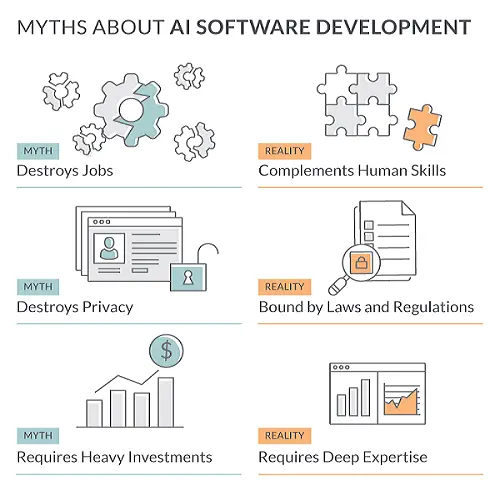
AI can also provide insights and analysis of data that would be difficult or impossible to obtain, leading to better decision-making and more accurate predictions. Furthermore, AI is increasingly necessary to develop software that adapts to changing environments and user needs. As applications become more complex, the need for intelligent software solutions that can learn and evolve becomes more apparent. AI is a critical tool for building better software solutions, and its importance will only continue to grow.
Overview of AI and Machine Learning
Artificial Intelligence (AI) and Machine Learning (ML) are two cutting-edge technologies that have revolutionized software development. AI is the simulation of human intelligence processes by computer systems. It involves using algorithms and models to make predictions, recognize patterns, and make decisions. Machine Learning, on the other hand, is a subset of AI that involves training algorithms to learn and make predictions based on data.
AI and ML have several applications in software development, including requirements gathering and analysis, natural language processing (NLP), sentiment analysis, predictive analysis, software design and architecture, automated design and modeling, decision support systems, optimization algorithms, code generation, automated testing, continuous integration and deployment (CI/CD).
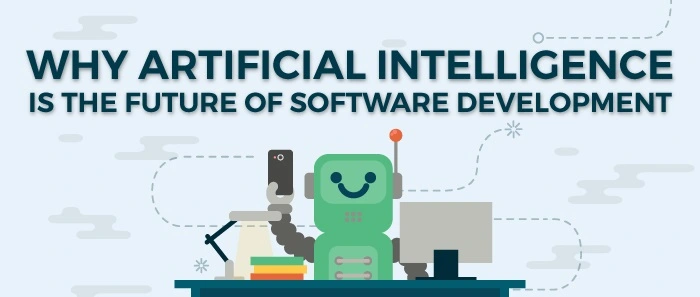
One of the biggest advantages of AI and ML is their ability to learn and adapt to new situations. This means they can continuously improve their performance and provide better results. They can also handle large amounts of data and automate complex tasks, allowing developers to focus on more creative work.
AI and ML are powerful tools that are transforming software development. They offer developers new capabilities and insights that can lead to better software solutions. As the technology continues to evolve, we can expect even more innovative applications.
10 Benefits of Using AI in Software Development
AI is rapidly transforming software development, offering developers powerful tools and techniques to enhance their work.
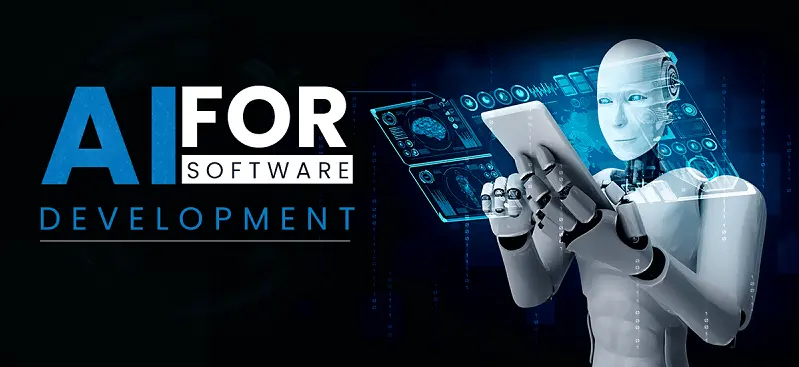
Here are 10 benefits of using AI in software development:
- Improved predictive maintenance: Developers can build predictive maintenance tools that analyze software performance data and predict failures before they occur. This results in less downtime and a more stable system.
- Enhanced user experience: AI-powered applications can learn from user behavior and adapt to their needs. It provides a more personalized experience. This results in higher user satisfaction and engagement.
- Efficient resource allocation: AI algorithms can help developers optimize resource allocation by predicting resource usage patterns. They also help in dynamically reallocating resources as needed. This leads to reduced costs and improved performance.
- Better security: AI-powered security tools can detect and prevent cyber threats in real-time. It helps in reducing the risk of security breaches and data loss.
- Smarter debugging: AI can identify and fix bugs automatically, reducing the time and effort required for debugging.
- Improved software testing: Using AI-powered testing tools, developers can perform more thorough and efficient testing, It results in higher-quality software and faster time-to-market.
- Automated code optimization: AI algorithms can analyze code performance data and suggest optimizations automatically. This way developers can write more efficient and effective code.
- Intelligent documentation: AI-powered tools can generate documentation automatically, It reduces the time and effort required for developers to write and maintain documentation.
- Faster data processing: Using AI algorithms, developers can process large amounts of data quickly and efficiently. It can results in more effective data-driven decision making.
- Real-time insights: AI-powered tools can analyze real-time data streams and provide insights instantly. It allows developers to respond quickly to changing conditions and improve software performance.
AI and Machine Learning Applications in Software Development
As the demand for smart and intelligent software increases, AI and Machine Learning applications in software development are becoming essential for businesses.
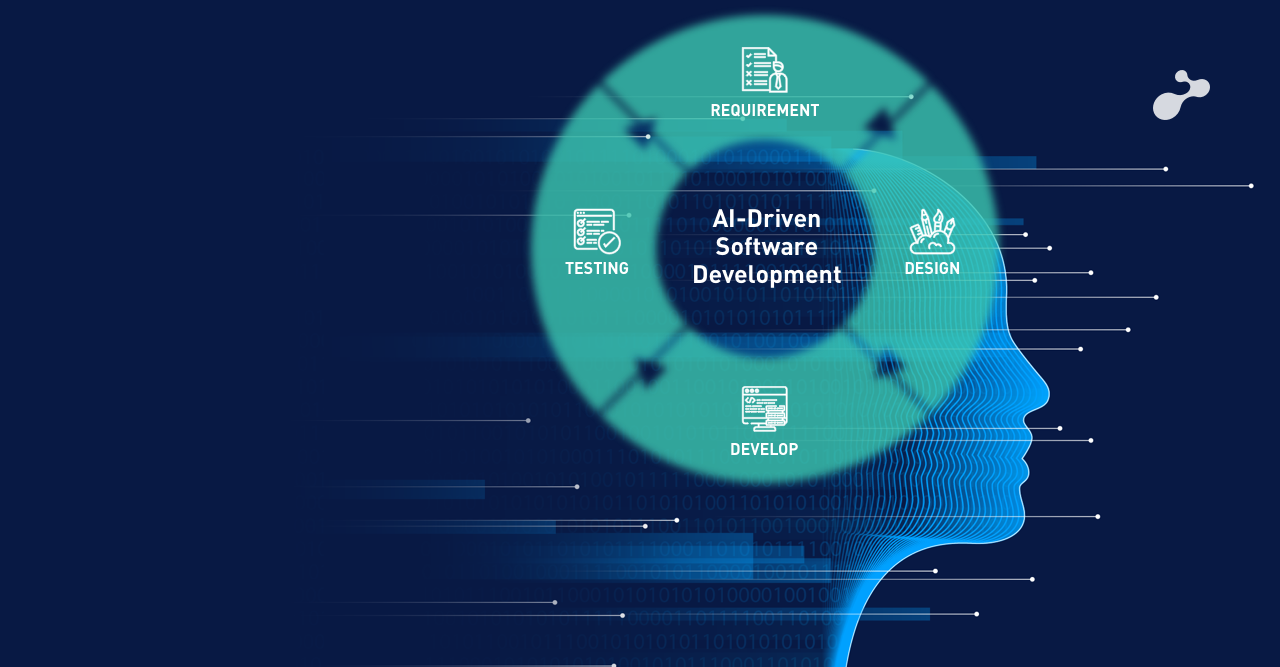
Here are the applications of AI in software development.
-
Requirements gathering and analysis
-
Natural language processing (NLP)
When it comes to software development, gathering and analyzing requirements is a critical step. However, it can be a time-consuming and laborious process, especially when dealing with large amounts of text. This is where Natural Language Processing (NLP) comes in handy. With AI and Machine Learning applications, NLP can automate the analysis of textual data, making the requirements gathering process more efficient and accurate. By leveraging NLP, you can extract important information from text documents, identify keywords, and classify data according to its relevance to the project. This also helps to streamline the software development process, saving time and reducing errors. NLP is just one example of how AI and Machine Learning are transforming software development, making it smarter, faster, and more efficient than ever before.
-
Sentiment analysis
In software development, understanding the sentiment behind user feedback is crucial for creating successful products. This is where Sentiment Analysis, an application of AI and Machine Learning, comes in. By analyzing user reviews and feedback, Sentiment Analysis can determine the overall sentiment towards a product, service or feature. This information is valuable for software development teams as it can help identify areas for improvement and inform decisions on future development. With AI and Machine Learning, Sentiment Analysis is becoming more accurate and efficient, allowing teams to gain insights into customer satisfaction and make data-driven decisions. By using Sentiment Analysis in software development, you can also ensure that your product meets the needs and expectations of your users. This technique leads to better user experiences and increased customer loyalty.
-
Predictive analysis
Predictive analysis is a powerful application of AI and Machine Learning that is transforming the way software development teams gather and analyze requirements. By leveraging historical data and algorithms, predictive analysis can identify patterns and trends that can inform future development decisions. This also allows software development teams to anticipate potential issues before they occur, ensuring that products are developed with the user’s needs in mind. With predictive analysis, software development teams can save time and resources by focusing on the most critical areas for improvement. By using AI and Machine Learning to support predictive analysis, software development teams can create smarter, more efficient products especially to meet the needs and expectations of their users.
-
Software design and architecture
-
Automated design and modeling
This application refers to the use of various AI and Machine Learning algorithms to automate the process of designing and modeling software systems. These algorithms can analyze large amounts of data to identify patterns and optimize software designs. It results in more efficient and effective software systems.
One popular technique for Automated Design and Modeling is Genetic Programming. It uses a genetic algorithm to evolve software systems over time. This involves creating a set of programs that can be combined and mutated to create new and improved versions of the software. Another technique is Neural Network-based Design. This technique involves training a neural network to create software designs based on a set of input parameters. Automated Design and Modeling also includes the use of tools such as AutoML and AutoCAD, which use AI and Machine Learning to automate the process of designing and modeling software systems. These tools can be used to optimize software designs for various parameters, such as performance, scalability, and maintainability.
-
Decision support systems
AI and Machine Learning Applications in Software Development: Decision support systems (DSS) use statistical analysis, data mining, and Machine Learning algorithms to assist decision-making processes. DSS can analyze large data sets, identify patterns, and provide recommendations to optimize software design and architecture. Popular DSS techniques include Decision Trees for classifying data and Bayesian Networks for making predictions. DSS is a powerful application of AI and Machine Learning in software development. It also allows software architects to make informed decisions and create high-quality software. We can also expect to see even more innovative DSS tools for software development in the future.
-
Optimization algorithms
Optimization algorithms are a powerful application of AI and Machine Learning in software development. They enable software architects to create efficient and effective software designs. These algorithms leverage techniques such as linear programming, dynamic programming, and simulated annealing to identify the best solution to a given optimization problem. Optimization algorithms can be used to improve software performance, reduce costs, and enhance user experience. By automating the optimization process, software architects can save time and reduce errors. It helps them design more reliable and scalable software systems. Optimization algorithms can also be customized and adapted to specific software design requirements using AI and ML. It leads to more innovative and effective solutions.
-
Software development workflows and processes
-
Code generation
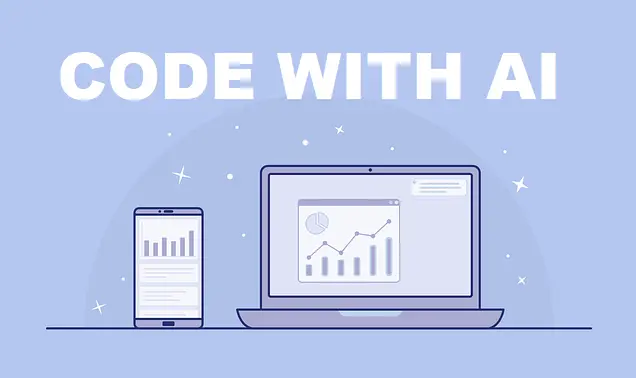
Code generation is a rapidly growing application of AI in software development workflows and processes. We have also see the recent emergence of powerful AI models like OpenAI’s Codex and Facebook’s AI-powered Codegen. These models can also generate entire code snippets, functions, and even complete programs based on natural language inputs and code examples. Other popular tools for code generation include TabNine and DeepCode. These tools use AI algorithms to analyze existing codebases and suggest code snippets and autocomplete functions. These tools can significantly increase developer productivity and reduce the risk of errors. It helps developers to focus on more complex tasks. We can expect even more advanced code generation tools for software development in the future.
-
Automated testing
AI and Machine Learning have revolutionized the software development industry, enabling developers to perform automated testing with ease. Automated testing is a critical application of AI in software development workflows and processes. It allows developers to run tests automatically, reducing the time and effort required for testing. Popular tools such as Testim, Appvance IQ, and Applitools use AI algorithms to generate test cases and detect errors in software. These also tools provide developers with the ability to identify bugs and issues early in the development process. This can lead to more robust and stable software products. With AI and Machine Learning, the possibilities for automated testing in software development are vast. Their use can result into even more efficient and effective software testing practices.
-
Continuous integration and deployment (CI/CD)
Continuous integration and deployment (CI/CD) is like the heartbeat of the software development process, keeping everything running smoothly and efficiently. But with the power of AI and Machine Learning, that heartbeat is stronger than ever before. Automated tools like Jenkins, CircleCI, and GitLab are revolutionizing the way software is developed, tested, and deployed. These tools use advanced AI algorithms to analyze every aspect of the development pipeline, from coding to deployment, identifying issues and streamlining the process. With AI and Machine Learning, developers can also create a more efficient and effective CI/CD pipeline. It ensures faster development times and more reliable software products. The result is a win-win for developers and end-users alike.
Examples of AI in Software Development
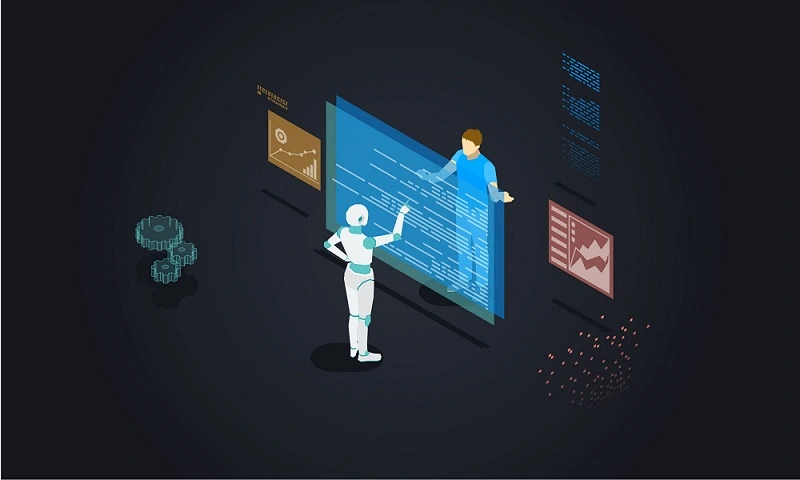
Case studies of top companies using AI in software development
-
Google
Google is one of the largest tech companies that has been using AI in software development. The company has been utilizing machine learning algorithms to improve its search algorithms and algorithms for Google Maps. With AI, Google has been able to provide more accurate search results, and recommendations based on user behavior. In 2018, Google also announced that they had trained a machine learning model that could detect 10,000 types of tumors with an accuracy rate of 93%.
-
Microsoft
Microsoft is another tech giant that has been using AI in software development for many years. They have been incorporating AI into many of their products, such as Office 365, Bing, and Cortana. The company has been also using AI to improve its natural language processing capabilities, speech recognition, and to automate customer service. In 2019, Microsoft’s machine reading comprehension system surpassed human-level performance in the RACE dataset.
-
Facebook
Facebook has been utilizing AI in software development to improve its algorithms for content recommendation and filtering. Facebook uses AI to identify and remove fake accounts, spam content, and harmful content to improve user safety. Facebook also uses AI to personalize user experiences and for automatic translations for content in different languages. In 2020, Facebook reported that they had removed over 2.2 billion fake accounts in the first quarter alone.
-
Netflix
Netflix has been using AI in software development to personalize its content recommendations for individual users. With AI algorithms, Netflix can analyze user behavior and preferences. This has led to an increase in user engagement and a decrease in churn rates. Netflix also uses AI to optimize its video encoding algorithms. In 2019, Netflix reported that their personalization algorithms saved the company $1 billion in revenue.
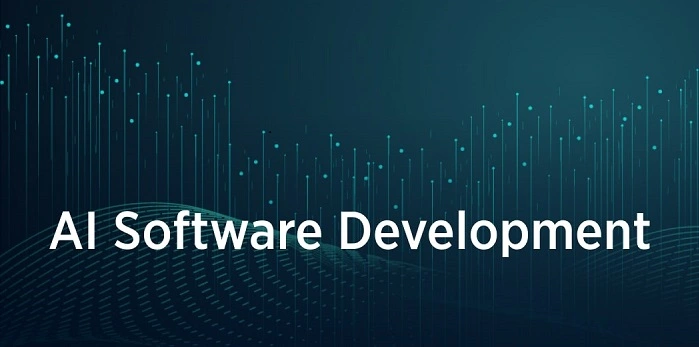
Successful AI implementation in software development
-
Netflix
Netflix is using AI to recommend content to its users. It collects data on users’ watching habits and uses algorithms to suggest shows and movies they might enjoy. Netflix also claims that 75% of content watched on its platform is a result of these recommendations.
-
Google
Google’s AI-powered language model, BERT, helps the search engine understand natural language queries better. This has led to more accurate search results, especially for longer and more complex queries.
-
Spotify
Spotify is using AI to personalize its users’ playlists. It analyzes listening history, user behavior, and contextual data. It then use that data to suggest songs and podcasts that are tailored to each user’s taste.
-
Grammarly
Grammarly is an AI-powered writing assistant that helps users improve their writing by suggesting grammar and spelling corrections. It also offers style and tone suggestions, making it a valuable tool for writers of all levels.
-
Waze
Waze is a navigation app that uses AI to analyze traffic patterns and suggest the fastest route for drivers. It also offers real-time alerts for accidents, road closures, and other hazards.
Conclusion
AI and machine learning have already made significant impacts on software development, and their potential for the future is vast. From automating mundane tasks to providing personalized user experiences, AI is transforming the way we design and develop software applications. It is exciting to imagine the possibilities for creating even more intelligent and intuitive software. The software that can meet the needs of users in unprecedented ways when the technology continues to evolve.
The future of software development is here, and it is powered by AI
Related Posts:
Tagged
Share This Article
AI in software development is no longer a futuristic concept. It has become an essential part of modern software development, providing various benefits to developers and businesses. AI and machine learning can automate many tasks in software development workflows. It can handle everything from requirements gathering to testing and deployment.
In this article, we will explore the impact of AI and machine learning on software development and discuss their applications, benefits, and examples of successful implementations. You will learn how AI can improve software quality, speed up development and delivery, reduce costs and errors, and enhance decision-making and problem-solving abilities.

Key Points
- AI-powered code is more efficient and can create complex applications with less effort and time.
- AI can analyze data for better decision-making and predictions.
- AI automates repetitive tasks, freeing up developers for more creative work.
- NLP allows developers to communicate with machines more easily.
- Machine learning predicts and prioritizes bug-fixing efforts.
- AI generates code based on natural language descriptions for faster development.
- Automated testing and deployment improve software reliability and stability.
- Decision support systems help developers make better software design decisions.
Importance of AI in modern software development
AI is incredibly important in modern software development. Technologies such as machine learning, natural language processing, and decision support systems are changing how developers design, build, and deploy software applications. AI can automate many aspects of software development, like code generation and testing, so developers can focus on more creative work.

AI can also provide insights and analysis of data that would be difficult or impossible to obtain, leading to better decision-making and more accurate predictions. Furthermore, AI is increasingly necessary to develop software that adapts to changing environments and user needs. As applications become more complex, the need for intelligent software solutions that can learn and evolve becomes more apparent. AI is a critical tool for building better software solutions, and its importance will only continue to grow.
Overview of AI and Machine Learning
Artificial Intelligence (AI) and Machine Learning (ML) are two cutting-edge technologies that have revolutionized software development. AI is the simulation of human intelligence processes by computer systems. It involves using algorithms and models to make predictions, recognize patterns, and make decisions. Machine Learning, on the other hand, is a subset of AI that involves training algorithms to learn and make predictions based on data.
AI and ML have several applications in software development, including requirements gathering and analysis, natural language processing (NLP), sentiment analysis, predictive analysis, software design and architecture, automated design and modeling, decision support systems, optimization algorithms, code generation, automated testing, continuous integration and deployment (CI/CD).

One of the biggest advantages of AI and ML is their ability to learn and adapt to new situations. This means they can continuously improve their performance and provide better results. They can also handle large amounts of data and automate complex tasks, allowing developers to focus on more creative work.
AI and ML are powerful tools that are transforming software development. They offer developers new capabilities and insights that can lead to better software solutions. As the technology continues to evolve, we can expect even more innovative applications.
10 Benefits of Using AI in Software Development
AI is rapidly transforming software development, offering developers powerful tools and techniques to enhance their work.

Here are 10 benefits of using AI in software development:
- Improved predictive maintenance: Developers can build predictive maintenance tools that analyze software performance data and predict failures before they occur. This results in less downtime and a more stable system.
- Enhanced user experience: AI-powered applications can learn from user behavior and adapt to their needs. It provides a more personalized experience. This results in higher user satisfaction and engagement.
- Efficient resource allocation: AI algorithms can help developers optimize resource allocation by predicting resource usage patterns. They also help in dynamically reallocating resources as needed. This leads to reduced costs and improved performance.
- Better security: AI-powered security tools can detect and prevent cyber threats in real-time. It helps in reducing the risk of security breaches and data loss.
- Smarter debugging: AI can identify and fix bugs automatically, reducing the time and effort required for debugging.
- Improved software testing: Using AI-powered testing tools, developers can perform more thorough and efficient testing, It results in higher-quality software and faster time-to-market.
- Automated code optimization: AI algorithms can analyze code performance data and suggest optimizations automatically. This way developers can write more efficient and effective code.
- Intelligent documentation: AI-powered tools can generate documentation automatically, It reduces the time and effort required for developers to write and maintain documentation.
- Faster data processing: Using AI algorithms, developers can process large amounts of data quickly and efficiently. It can results in more effective data-driven decision making.
- Real-time insights: AI-powered tools can analyze real-time data streams and provide insights instantly. It allows developers to respond quickly to changing conditions and improve software performance.
AI and Machine Learning Applications in Software Development
As the demand for smart and intelligent software increases, AI and Machine Learning applications in software development are becoming essential for businesses.

Here are the applications of AI in software development.
-
Requirements gathering and analysis
-
Natural language processing (NLP)
When it comes to software development, gathering and analyzing requirements is a critical step. However, it can be a time-consuming and laborious process, especially when dealing with large amounts of text. This is where Natural Language Processing (NLP) comes in handy. With AI and Machine Learning applications, NLP can automate the analysis of textual data, making the requirements gathering process more efficient and accurate. By leveraging NLP, you can extract important information from text documents, identify keywords, and classify data according to its relevance to the project. This also helps to streamline the software development process, saving time and reducing errors. NLP is just one example of how AI and Machine Learning are transforming software development, making it smarter, faster, and more efficient than ever before.
-
Sentiment analysis
In software development, understanding the sentiment behind user feedback is crucial for creating successful products. This is where Sentiment Analysis, an application of AI and Machine Learning, comes in. By analyzing user reviews and feedback, Sentiment Analysis can determine the overall sentiment towards a product, service or feature. This information is valuable for software development teams as it can help identify areas for improvement and inform decisions on future development. With AI and Machine Learning, Sentiment Analysis is becoming more accurate and efficient, allowing teams to gain insights into customer satisfaction and make data-driven decisions. By using Sentiment Analysis in software development, you can also ensure that your product meets the needs and expectations of your users. This technique leads to better user experiences and increased customer loyalty.
-
Predictive analysis
Predictive analysis is a powerful application of AI and Machine Learning that is transforming the way software development teams gather and analyze requirements. By leveraging historical data and algorithms, predictive analysis can identify patterns and trends that can inform future development decisions. This also allows software development teams to anticipate potential issues before they occur, ensuring that products are developed with the user’s needs in mind. With predictive analysis, software development teams can save time and resources by focusing on the most critical areas for improvement. By using AI and Machine Learning to support predictive analysis, software development teams can create smarter, more efficient products especially to meet the needs and expectations of their users.
-
Software design and architecture
-
Automated design and modeling
This application refers to the use of various AI and Machine Learning algorithms to automate the process of designing and modeling software systems. These algorithms can analyze large amounts of data to identify patterns and optimize software designs. It results in more efficient and effective software systems.
One popular technique for Automated Design and Modeling is Genetic Programming. It uses a genetic algorithm to evolve software systems over time. This involves creating a set of programs that can be combined and mutated to create new and improved versions of the software. Another technique is Neural Network-based Design. This technique involves training a neural network to create software designs based on a set of input parameters. Automated Design and Modeling also includes the use of tools such as AutoML and AutoCAD, which use AI and Machine Learning to automate the process of designing and modeling software systems. These tools can be used to optimize software designs for various parameters, such as performance, scalability, and maintainability.
-
Decision support systems
AI and Machine Learning Applications in Software Development: Decision support systems (DSS) use statistical analysis, data mining, and Machine Learning algorithms to assist decision-making processes. DSS can analyze large data sets, identify patterns, and provide recommendations to optimize software design and architecture. Popular DSS techniques include Decision Trees for classifying data and Bayesian Networks for making predictions. DSS is a powerful application of AI and Machine Learning in software development. It also allows software architects to make informed decisions and create high-quality software. We can also expect to see even more innovative DSS tools for software development in the future.
-
Optimization algorithms
Optimization algorithms are a powerful application of AI and Machine Learning in software development. They enable software architects to create efficient and effective software designs. These algorithms leverage techniques such as linear programming, dynamic programming, and simulated annealing to identify the best solution to a given optimization problem. Optimization algorithms can be used to improve software performance, reduce costs, and enhance user experience. By automating the optimization process, software architects can save time and reduce errors. It helps them design more reliable and scalable software systems. Optimization algorithms can also be customized and adapted to specific software design requirements using AI and ML. It leads to more innovative and effective solutions.
-
Software development workflows and processes
-
Code generation

Code generation is a rapidly growing application of AI in software development workflows and processes. We have also see the recent emergence of powerful AI models like OpenAI’s Codex and Facebook’s AI-powered Codegen. These models can also generate entire code snippets, functions, and even complete programs based on natural language inputs and code examples. Other popular tools for code generation include TabNine and DeepCode. These tools use AI algorithms to analyze existing codebases and suggest code snippets and autocomplete functions. These tools can significantly increase developer productivity and reduce the risk of errors. It helps developers to focus on more complex tasks. We can expect even more advanced code generation tools for software development in the future.
-
Automated testing
AI and Machine Learning have revolutionized the software development industry, enabling developers to perform automated testing with ease. Automated testing is a critical application of AI in software development workflows and processes. It allows developers to run tests automatically, reducing the time and effort required for testing. Popular tools such as Testim, Appvance IQ, and Applitools use AI algorithms to generate test cases and detect errors in software. These also tools provide developers with the ability to identify bugs and issues early in the development process. This can lead to more robust and stable software products. With AI and Machine Learning, the possibilities for automated testing in software development are vast. Their use can result into even more efficient and effective software testing practices.
-
Continuous integration and deployment (CI/CD)
Continuous integration and deployment (CI/CD) is like the heartbeat of the software development process, keeping everything running smoothly and efficiently. But with the power of AI and Machine Learning, that heartbeat is stronger than ever before. Automated tools like Jenkins, CircleCI, and GitLab are revolutionizing the way software is developed, tested, and deployed. These tools use advanced AI algorithms to analyze every aspect of the development pipeline, from coding to deployment, identifying issues and streamlining the process. With AI and Machine Learning, developers can also create a more efficient and effective CI/CD pipeline. It ensures faster development times and more reliable software products. The result is a win-win for developers and end-users alike.
Examples of AI in Software Development

Case studies of top companies using AI in software development
-
Google
Google is one of the largest tech companies that has been using AI in software development. The company has been utilizing machine learning algorithms to improve its search algorithms and algorithms for Google Maps. With AI, Google has been able to provide more accurate search results, and recommendations based on user behavior. In 2018, Google also announced that they had trained a machine learning model that could detect 10,000 types of tumors with an accuracy rate of 93%.
-
Microsoft
Microsoft is another tech giant that has been using AI in software development for many years. They have been incorporating AI into many of their products, such as Office 365, Bing, and Cortana. The company has been also using AI to improve its natural language processing capabilities, speech recognition, and to automate customer service. In 2019, Microsoft’s machine reading comprehension system surpassed human-level performance in the RACE dataset.
-
Facebook
Facebook has been utilizing AI in software development to improve its algorithms for content recommendation and filtering. Facebook uses AI to identify and remove fake accounts, spam content, and harmful content to improve user safety. Facebook also uses AI to personalize user experiences and for automatic translations for content in different languages. In 2020, Facebook reported that they had removed over 2.2 billion fake accounts in the first quarter alone.
-
Netflix
Netflix has been using AI in software development to personalize its content recommendations for individual users. With AI algorithms, Netflix can analyze user behavior and preferences. This has led to an increase in user engagement and a decrease in churn rates. Netflix also uses AI to optimize its video encoding algorithms. In 2019, Netflix reported that their personalization algorithms saved the company $1 billion in revenue.

Successful AI implementation in software development
-
Netflix
Netflix is using AI to recommend content to its users. It collects data on users’ watching habits and uses algorithms to suggest shows and movies they might enjoy. Netflix also claims that 75% of content watched on its platform is a result of these recommendations.
-
Google
Google’s AI-powered language model, BERT, helps the search engine understand natural language queries better. This has led to more accurate search results, especially for longer and more complex queries.
-
Spotify
Spotify is using AI to personalize its users’ playlists. It analyzes listening history, user behavior, and contextual data. It then use that data to suggest songs and podcasts that are tailored to each user’s taste.
-
Grammarly
Grammarly is an AI-powered writing assistant that helps users improve their writing by suggesting grammar and spelling corrections. It also offers style and tone suggestions, making it a valuable tool for writers of all levels.
-
Waze
Waze is a navigation app that uses AI to analyze traffic patterns and suggest the fastest route for drivers. It also offers real-time alerts for accidents, road closures, and other hazards.
Conclusion
AI and machine learning have already made significant impacts on software development, and their potential for the future is vast. From automating mundane tasks to providing personalized user experiences, AI is transforming the way we design and develop software applications. It is exciting to imagine the possibilities for creating even more intelligent and intuitive software. The software that can meet the needs of users in unprecedented ways when the technology continues to evolve.
The future of software development is here, and it is powered by AI
Related Posts:




![How To Fake GPS Location on iPhone Without Jailbreaking [2023]](/_next/image?url=https%3A%2F%2Fwriteflow-media.s3.amazonaws.com%2Fsites%2F16%2Fmedia%2F2025%2F10%2Fgps-location-feature-wlaR2F.webp&w=3840&q=75)